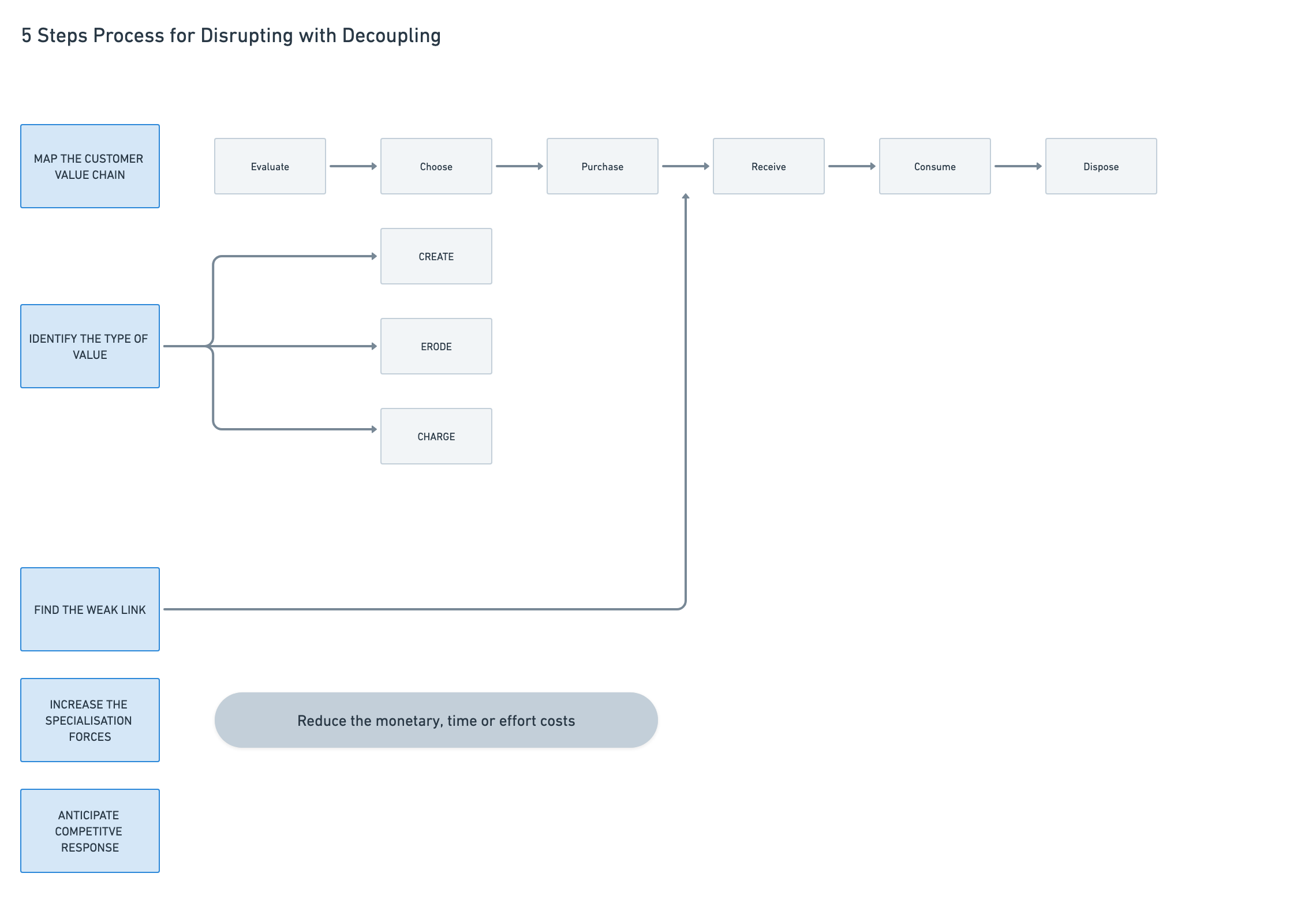
Consumers move through stages - evaluating, choosing, purchasing, receiving, consuming, and ultimately disposing of a product. By mapping and dissecting these stages, companies can pinpoint where they add or erode value. A critical takeaway is that each stage can be optimized to reduce consumer costs, whether monetary, effort-related, or time-based, thus enhancing overall customer value.
Customer Value Chain (CVC) Activities
| Type of Activity | Definition | Examples |
|---|---|---|
| Value Creating | An activity that creates value for the customer. | A cooked meal. Selling a used car. Staying in a hotel room. |
| Value Charging | An activity that is solely added to charge for the value created. | Paying $20 for a cooked meal. Paying 2% commission on the sale price of a car. Paying $200 per night. |
| Value Eroding | An activity that neither creates value for the customer nor charges for the value created. | Going to a restaurant to get a cooked meal to eat at home. Taking pictures and describing the used car in a classifieds listing. Providing personal and payment information every time to book a hotel. |

Decoupling in the CVC
The book proposes that companies should avoid seeking dominance by
eliminating competition but rather aim to coexist with entities that
decouple parts of the traditional CVC.
This concept of decoupling refers to allowing consumers to fulfil
different CVC activities through various service providers, disrupting
the conventional full-service model.
Instead of monopolizing the entire chain, successful businesses create targeted value where it matters most to consumers, maintaining an adaptive approach that meets the evolving needs of customer segments without overburdening them with unnecessary processes or costs.

Strategies Against Decoupling
- Recoupling: Bundling certain activities that discourage customers from separating them.
- Re-balancing: Examining CVC activities for untapped value-capturing opportunities rather than focusing solely on new services to counter competitors.
Customer-Centric Strategies
A notable insight is the shift towards customer-centric strategies, where decisions are guided by enhancing customer acquisition and satisfaction rather than solely resource allocation.
Example: Netflix pivoted from mailing DVDs to streaming to meet evolving consumer preferences and establish a scalable, future-ready model.
The Big Seven Areas of Disruption
The book identifies broader trends in consumption within “The Big Seven” areas:
- Where people live
- How they move
- What they eat
- What they wear
- How they learn
- How they entertain
- How they heal
Companies are encouraged to analyze these domains to identify emerging disruptions, making their products indispensable in a “set it and forget it” manner that simplifies consumers’ lives.
By prioritizing low-cost, high-impact activities in these areas, firms can stay ahead in a rapidly evolving market.